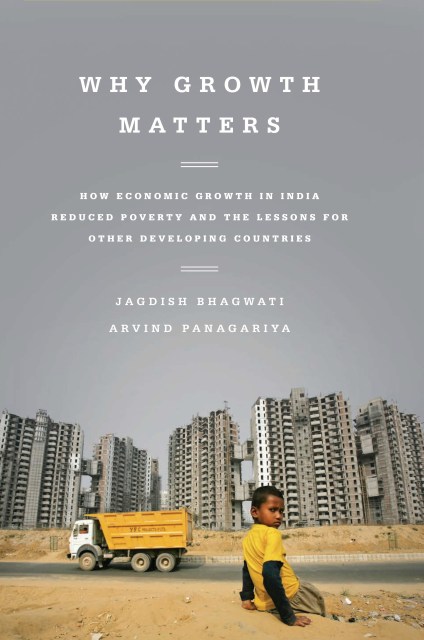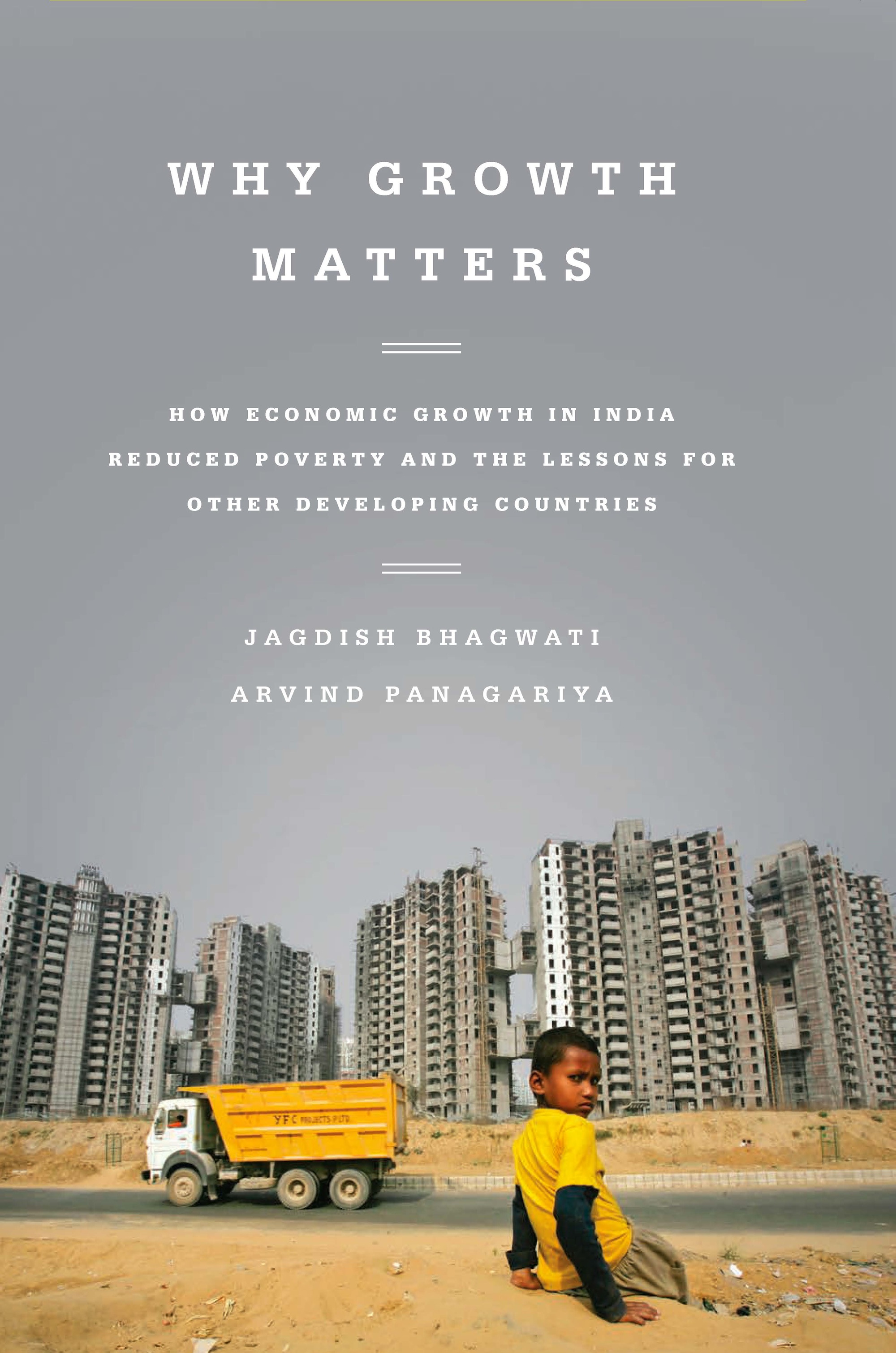Promotion
Use code MOM24 for 20% off site wide + free shipping over $45
Why Growth Matters
How Economic Growth in India Reduced Poverty and the Lessons for Other Developing Countries
Contributors
By Arvind Panagariya
Formats and Prices
Price
$11.99Price
$15.99 CADFormat
Format:
- ebook $11.99 $15.99 CAD
- Trade Paperback $21.99 $28.99 CAD
This item is a preorder. Your payment method will be charged immediately, and the product is expected to ship on or around April 9, 2013. This date is subject to change due to shipping delays beyond our control.
Also available from:
Bhagwati and Panagariya argue forcefully that only one strategy will help the poor to any significant effect: economic growth, led by markets overseen and encouraged by liberal state policies. Their radical message has huge consequences for economists, development NGOs and anti-poverty campaigners worldwide. There are vital lessons here not only for Southeast Asia, but for Africa, Eastern Europe, and anyone who cares that the effort to eradicate poverty is more than just good intentions. If you want it to work, you need growth. With all that implies.
Genre:
-
Publishers Weekly
“[Bhagwati and Panagariya] assert that India's economic development is relevant to the developing world as a whole, and, in lively fashion, rebut myths of growth and poverty under the Jawharlal Nehru and Indira Gandhi administrations… As much of the world struggles with elevated debt levels, the vision of India as ‘a role model for reform today' has applications reaching beyond the developing world.”
Washington Examiner
“All economic correlations are complex, and many factors are at play, but Why Growth Matters shows how the poor benefit from economic development and which regulations still stand in the way. As Pope Francis opens a discussion on reducing poverty, the book could not have come at a better time.”
James Crabtree, Financial Times
“This latest contribution from Jagdish Bhagwati and Arvind Panagariya, two Indian-born economists at Columbia University, is welcome. In Why Growth Matters, the duo provide perhaps the most full-throated defence to date of India's economic liberalisation, which began in 1991 and is widely understood to have led to a period of fast growth over the past decade.“ -
Hernando de Soto, economist and author of The Mystery of Capital
“Assembling reams of evidence from India's astonishing economic success story, Bhagwati & Panagariya make an unbeatable case for why market reforms are essential to economic growth—and improving the lives of the poor. Serious reformers throughout the developing world cannot ignore this book or Bhagwati's work throughout the years.”
Ernesto Zedillo, director of the Yale Center for the Study of Globalization and former president of Mexico“Every important developing country should be the subject of a masterful book like this. Bhagwati and Panagariya have paid a great service to India—and actually other emerging countries—by writing it. If it's a must read for scholars and practitioners of economic development, it should be absolutely mandatory for the Indian political leaders."
Pankaj Mishra, New York Review of Books
“A passionate case for more privatization and liberalization, and less protection for labor…Bhagwati has provided intellectual authority and sustenance to those who think that India, by prioritizing wealth-creation over health and education, can become a ‘role model' for ‘other developing nations.'” -
George A. Akerlof, Nobel Laureate in Economics, 2001
“Jagdish Bhagwati and Arvind Panagariya are two of the great intellectual lights behind one of the greatest miracles of economic history: the economic reform of India, and its subsequent takeoff. It is not just the well-to-do who have benefited, but, especially, the poor. The lessons from the spirit of 1991 are not just relevant for India today; they are also of prime importance for the billions of citizens of low income countries around the globe.”
Martin Feldstein, George F. Baker Professor of Economics at Harvard University and president emeritus of the National Bureau of Economic Research
“In this important book the two leading experts on India's economy refute the claims of those who reject pro-growth policies in favor of redistribution schemes. India's experience in the past two decades shows how a nation's economic growth reduces poverty and improves the well-being of disadvantaged groups. Bhagwati and Panagariya explain what India needs to do now and how other countries can learn from India's experience.”
- On Sale
- Apr 9, 2013
- Page Count
- 304 pages
- Publisher
- PublicAffairs
- ISBN-13
- 9781610392723
Newsletter Signup
By clicking ‘Sign Up,’ I acknowledge that I have read and agree to Hachette Book Group’s Privacy Policy and Terms of Use






